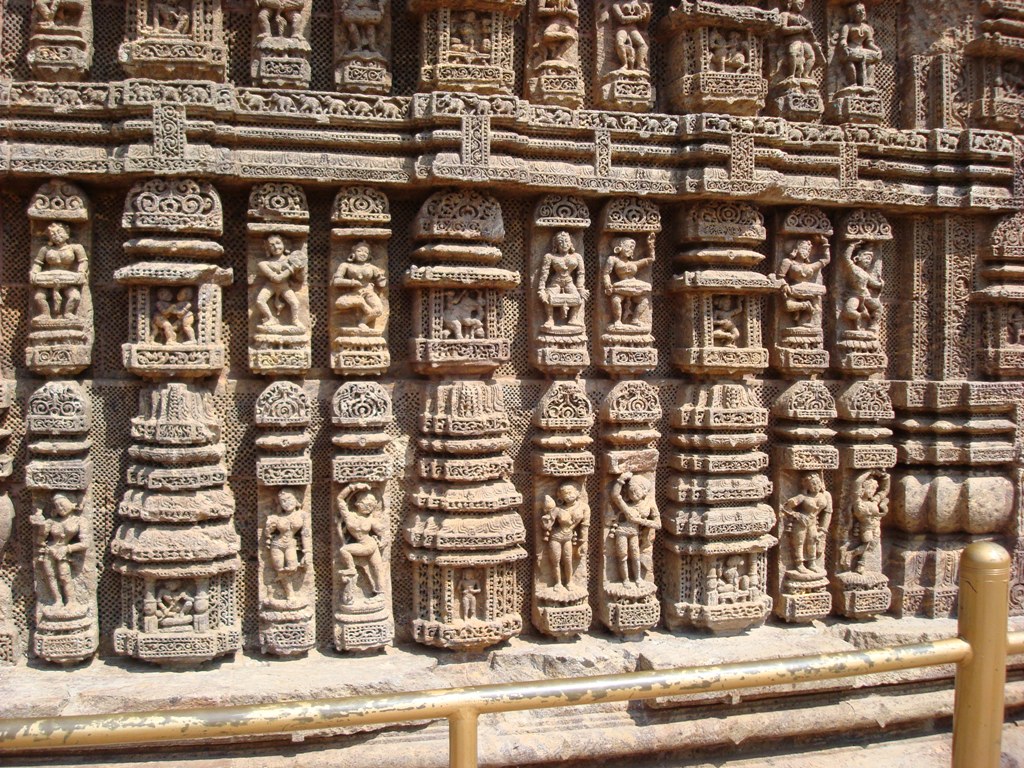What is the Sun Temple at Konarak?
 |
| © dracozlat |
In 1931, the Earl of Ronaldshay remarked on the Sun Temple,
"One of the most stupendous building....a pile of overwhelming grandeur even in it's decay".
The Architecture of Konarak
Like many of the holy temples in India, Konarak is raised off the ground on a plinth. The superstructure and roof of the sanctuary collapsed sometime during the 19th century, however the main entrance still retains its pyramidal roof. Residents and tourists alike cannot enter the building regardless, as the entire structure was filled with sand and stone to keep it from collapsing.In total, there are three sections that make up the Sun Temple. The main shrine connects to a prayer hall and the entrance to the temple. The pillared dance hall is separated from the main shrine, and is located in front of the main shrine. On of the most fascinating sections of the Sun Temple, in my opinion at least, are the twelve large wheels. It is said that the wheels are meant to represent the chariot of Surya.
Sculptures
Originally, there were seven horses that stood in front of the chariot, however only one remains intact. According to Hamshitha Acharya (2012) , "the spokes of these wheels serve as sundials, and the shadows formed by these can give the exact time of the day. Some says that the wheels represent the 24 hours of the day and others says the 12 months in its concept, where as the seven horses dragging the temple makes up the seven days of the week". |
| © India Mike |
Erotic Sculptures
The temple is famous for its erotic sculptures, which can be found primarily on the second level of the porch structure. Although it's unclear as to what these erotic art forms represent, we can postulate that they could have been used as amulets to avert evil. Of course, I like to think that that they meant a great deal more than what most people assume. The sculptures on the Sun Temple are lyrical and romantic, majestic and serene, and they all represent a realism that reflects a revolving circle of life.Source
Acharya, H. (2012 ). Sun temple – konark, a source of sculptural beauty . Retrieved from http://indianmonumentsattractions.wordpress.com/2012/08/31/sun-temple-konark-a-source-of-sculptural-beauty/
Informative! Thanks for the share :)
ReplyDeleteInformative! Thanks for the share :)
ReplyDelete